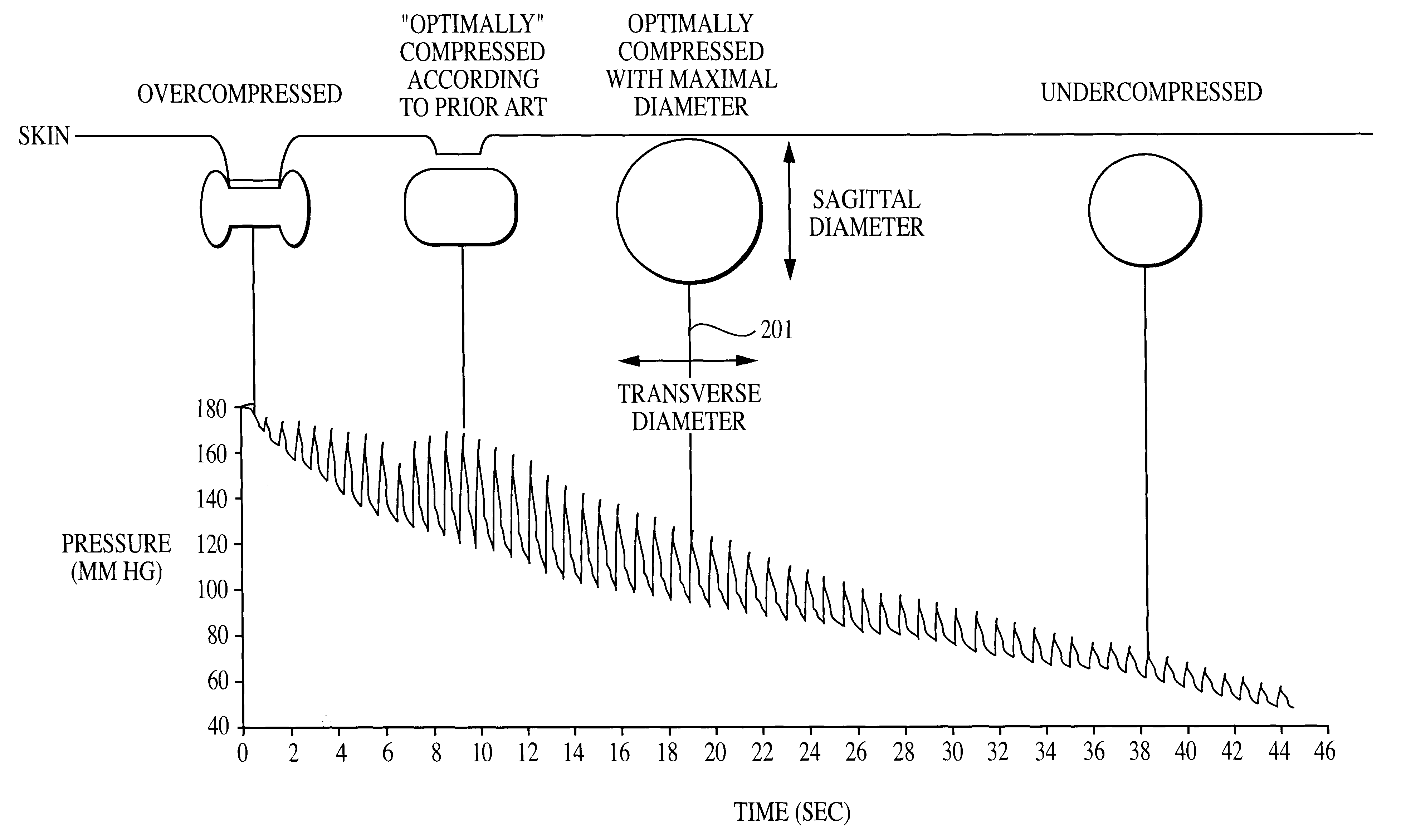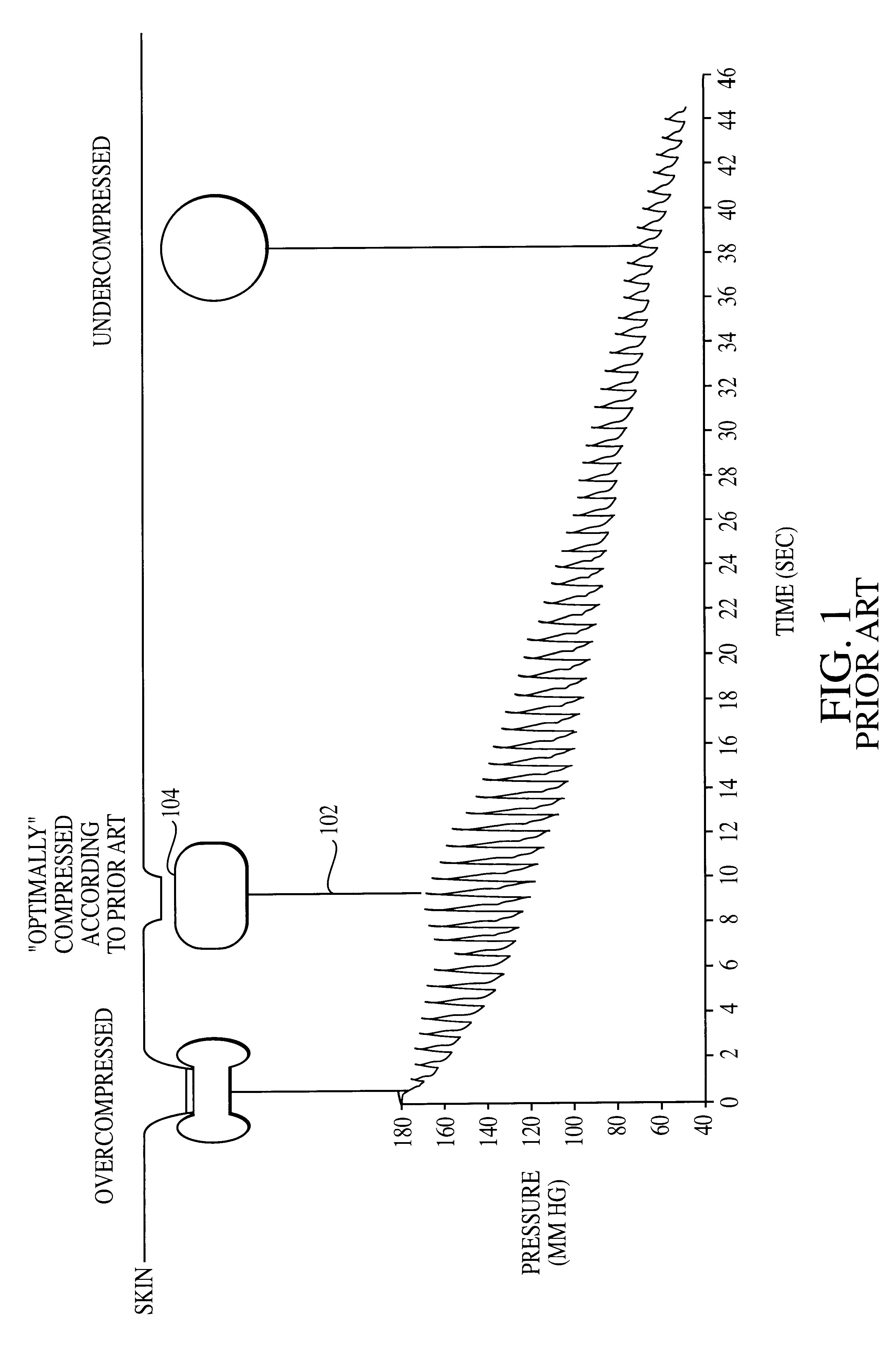Method and apparatus for the noninvasive determination of arterial blood pressure
a blood pressure and non-invasive technology, applied in the field of methods and apparatus for monitoring the blood pressure of living subjects, can solve the problems of inability to replicate the actual blood pressure waveform of the subject, inability to achieve true continuous, beat-to-beat blood pressure monitoring cannot be achieved using these techniques, and generally ineffective instruments for sensing short-term blood pressure variations
- Summary
- Abstract
- Description
- Claims
- Application Information
AI Technical Summary
Problems solved by technology
Method used
Image
Examples
Embodiment Construction
Algorithm Experiments
To demonstrate the maximum time-frequency principle, 10 learning data files were selected from past applanation sweeps that possessed high quality ultrasound, overcompression, and generally large mean arterial pressure (MAP) difference. MAP difference was calculated by comparing estimated MAP to the average of two cuff MAPs measured immediately before and after an applanation sweep. Two additional files were acquired with an additional constraint of sweeping down to a minimum diastolic value less than 30 mm Hg below the true diastole (specifically files 11 and 12). The data files were acquired using a variety of sensor geometries, position angles (steel mount angles are varied and unknown), and subjects, as illustrated in Table 1.
In each file, MAP was estimated by searching for the maximal pulsatile pressure. MAP as also estimated by determining the MAP associated with a pressure waveform with the maximal mean time-frequency distribution. The Pseudo Wigner distr...
PUM
 Login to View More
Login to View More Abstract
Description
Claims
Application Information
 Login to View More
Login to View More - R&D
- Intellectual Property
- Life Sciences
- Materials
- Tech Scout
- Unparalleled Data Quality
- Higher Quality Content
- 60% Fewer Hallucinations
Browse by: Latest US Patents, China's latest patents, Technical Efficacy Thesaurus, Application Domain, Technology Topic, Popular Technical Reports.
© 2025 PatSnap. All rights reserved.Legal|Privacy policy|Modern Slavery Act Transparency Statement|Sitemap|About US| Contact US: help@patsnap.com



